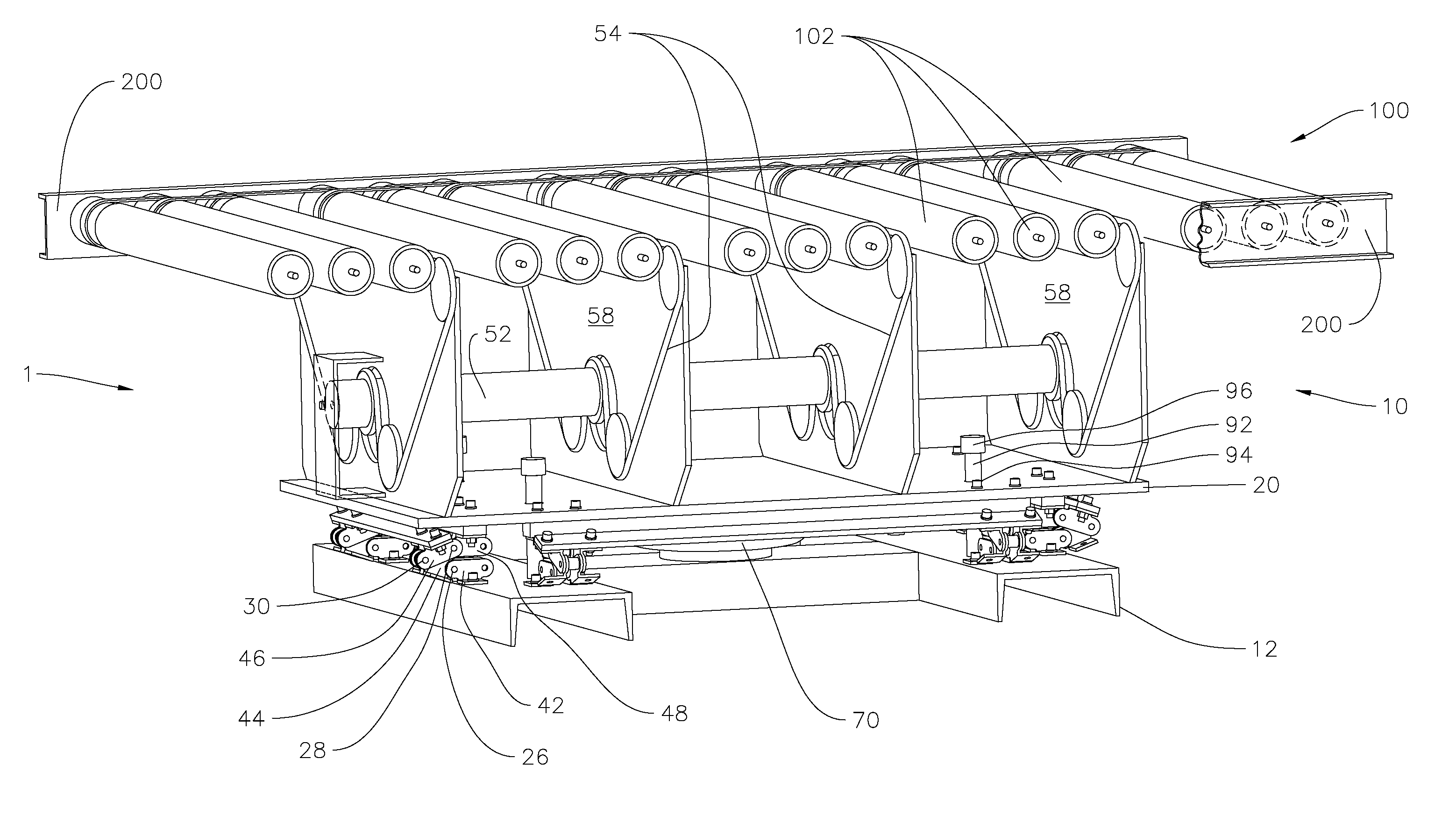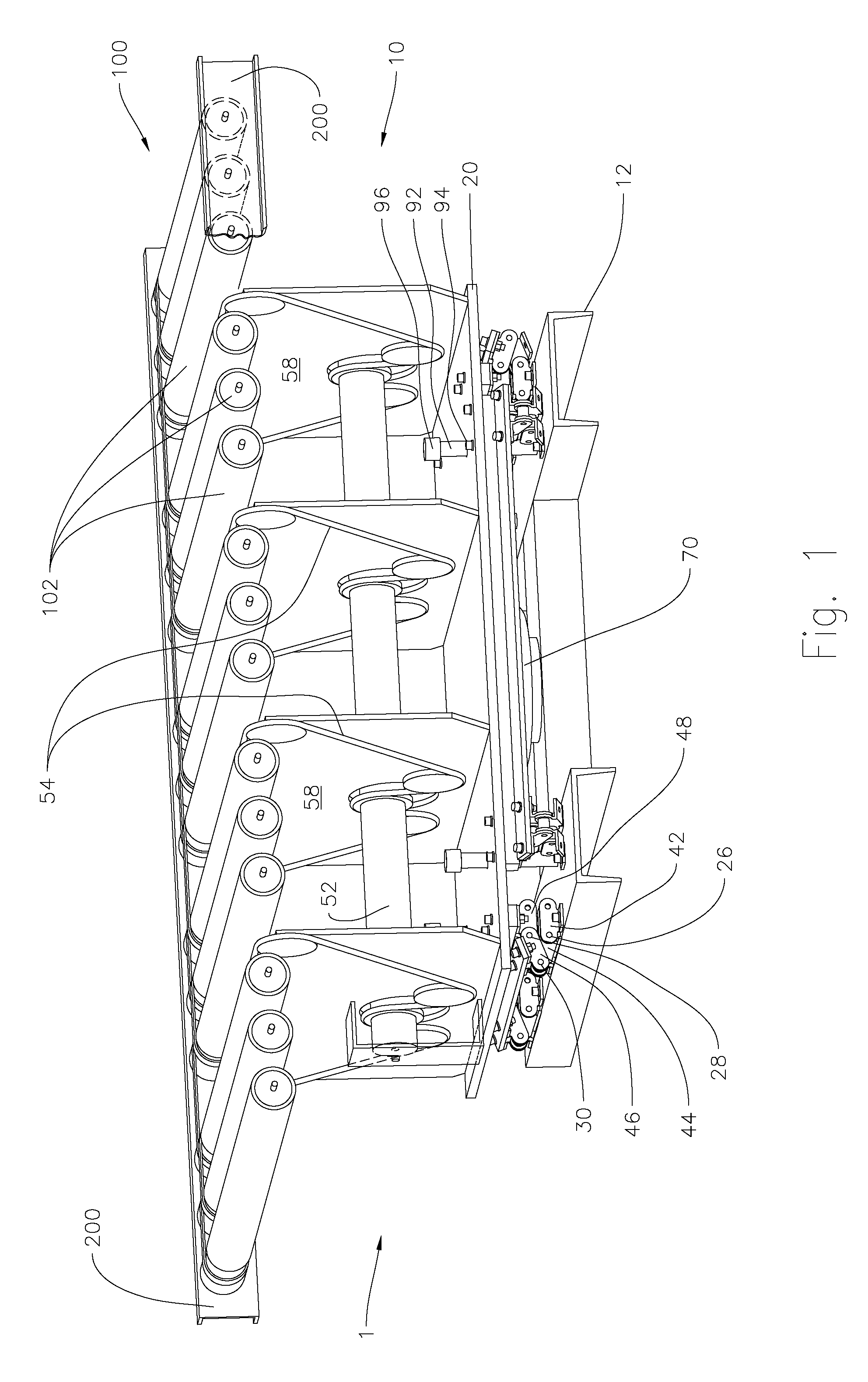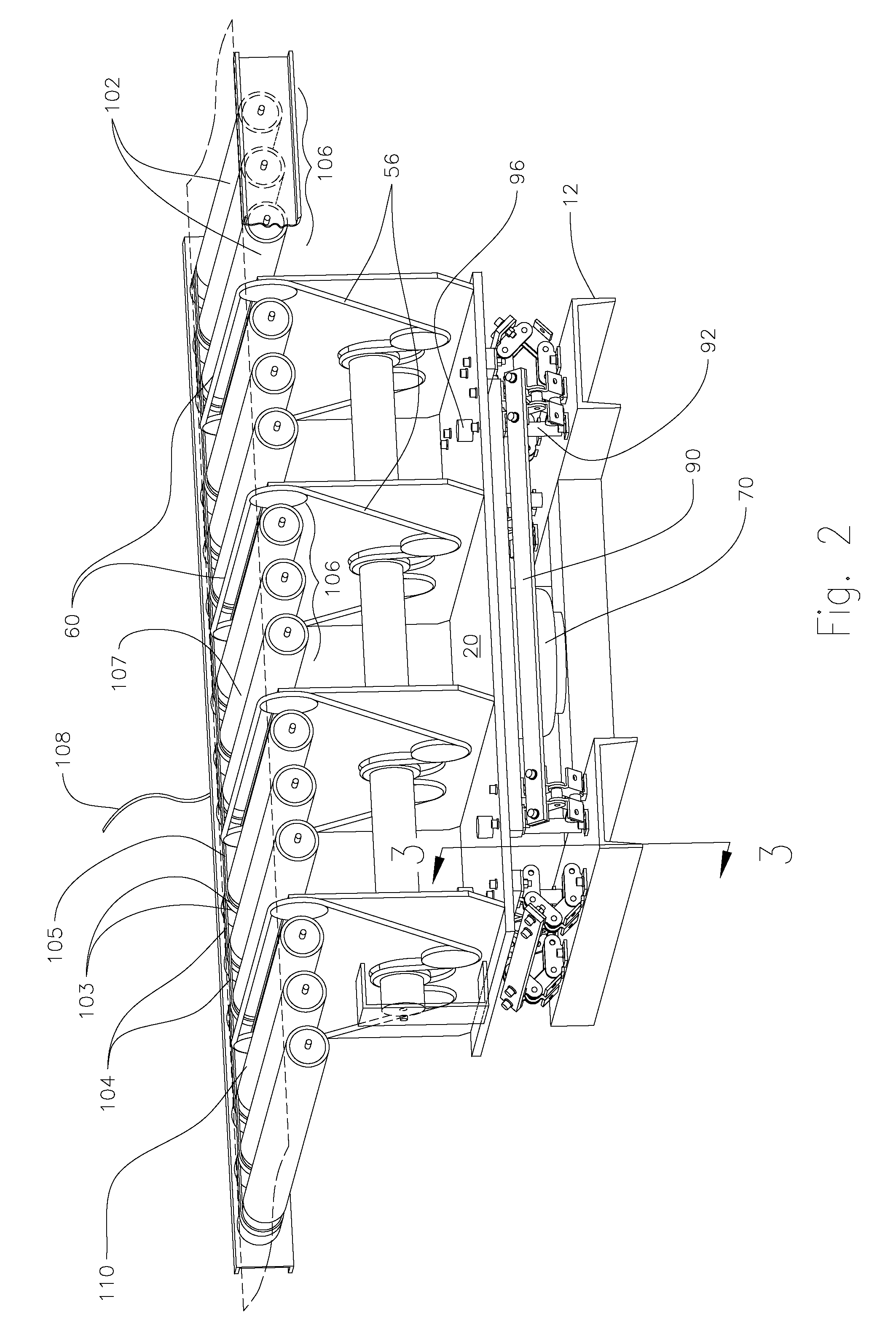Vertical lift assembly
a vertical lift and assembly technology, applied in the direction of conveyor parts, packaging, transportation and packaging, etc., can solve the problems of increased failure probability, belt stress, and jamming of the faster conveyor
- Summary
- Abstract
- Description
- Claims
- Application Information
AI Technical Summary
Benefits of technology
Problems solved by technology
Method used
Image
Examples
Embodiment Construction
[0015]FIGS. 1 and 2 show a portion of a roller conveyor system comprising an intercepting conveyor unit 1. The intercepting conveyor unit can be positioned along the roller conveying pathway. The unit serves to intercept an object passing along the conveyor, by either stopping the object, or by diverting the object off of the roller conveyor to a side of the roller conveyor. The intercepting conveyor unit can therefore be a stopping conveyor unit that comprises an object stop, or a diverting conveyor unit that comprises a diverting means, depending on the utility required. Examples of conventional diverting conveyors are those described in U.S. Pat. Nos. 4,174,774 and 4,798,275, hereby incorporated by reference.
[0016]The intercepting conveyor unit shown in the Figures is a diverting conveyor unit 1. The diverting conveyor unit 1 comprises a portion of a conveyor assembly 100 and a vertical lift diverter assembly 10. The conveyor assembly 100 comprises a support structure comprising ...
PUM
 Login to View More
Login to View More Abstract
Description
Claims
Application Information
 Login to View More
Login to View More - R&D
- Intellectual Property
- Life Sciences
- Materials
- Tech Scout
- Unparalleled Data Quality
- Higher Quality Content
- 60% Fewer Hallucinations
Browse by: Latest US Patents, China's latest patents, Technical Efficacy Thesaurus, Application Domain, Technology Topic, Popular Technical Reports.
© 2025 PatSnap. All rights reserved.Legal|Privacy policy|Modern Slavery Act Transparency Statement|Sitemap|About US| Contact US: help@patsnap.com



